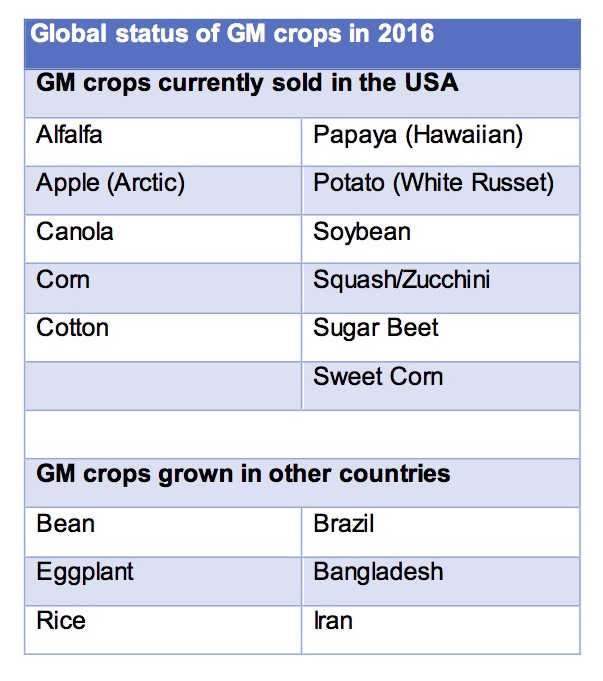A supermarket shopper 50 years ago would never believe the amount of fresh produce available today, especially in the winter. No generation before us has had a more plentiful, nutritious or safe assortment of fresh fruits and vegetables at their disposal.
New fruit and vegetable variety development is an ongoing process. Most of the fruits and vegetables found in supermarkets today simply do not exist in the wild. Over the past centuries, farmers derived fruits and vegetables from wild plants. In many cases, it is very difficult to recognize the wild versions.
Some fruits and vegetables, like cabbage and cauliflower, did not exist until around 400 to 600 years ago. Brussels sprouts and orange carrots have only been around for about 300 years. Today’s strawberries did not come into being until the mid-1700s. Newly invented crops, such as flower sprouts, kalettes and celtuce, continue to fascinate top chefs and the public.
As knowledge of biology has improved, it has become possible to take the guesswork out of the development of new varieties of field crops, as well as fruits and vegetables. Such new varieties are the result of changes at the DNA level. Rather than waiting for nature or an X-ray to make the change, these changes can now be made in a laboratory, often by gene splicing.
A new plant variety made by gene splicing is called a GMO, which stands for genetically modified organism. Thus, GMO is not an ingredient; rather, it refers to a new plant variety made using gene splicing.
In the era of genome sequencing, we find that nature is the most prolific gene splicer of all. Although the DNA changes made by gene splicing resemble those made by nature, GMOs are set aside for safety testing. Such testing is seldom, if ever, done on conventionally developed crops, because their development has never resulted in unanticipated health problems.
Safety is top priority for genetically modified foods
The safety testing on a GMO is done before it reaches the market. It can take over a decade and cost tens of millions of dollars. As a result of the global economy, many importers, including Australia, the European Union, Japan and Korea, review or repeat the safety tests, meaning that there is lots of redundancy in the system. Thus, GMOs are the most safety-tested foods in history.
The international standard requires that GMO foods must be as safe as their non-GMO versions, both for the environment and when used as food or feed. Otherwise, GMO foods are not allowed to reach the marketplace. GMO food safety tests have two parts. If the GMO has a new protein, studies must prove that the food is safe and its nutritional value is unaltered. Then, the GMO must show no unexpected changes that might harm consumers.
Following gene splicing, some GMOs can have traces of a new protein. It is this new protein that may give a GMO a desirable trait, such as the ability to resist insects without requiring insecticide application. As such, this new protein will be one of tens of thousands in the plant. However, because a few proteins are known to cause allergies and can be toxic, the new protein must be shown to not be allergenic or toxigenic.
This testing phase uses bioinformatics to compare the new protein to those that are known to be toxic or to cause allergies. This procedure ensures that the proteins are not alike. After rodent food is spiked with the protein and they are fed, the rodents are examined for signs of toxicity. The protein can also be used in skin prick tests or tested on blood serum samples to look for evidence of allergies. Next, the new variety is analyzed to ensure that its nutritional value has not been altered.
Having ensured that the new protein is safe for people and animals to eat, the second phase ensures that the gene-splicing process itself has not created any unexpected changes that might be harmful to consumers. Accordingly, the new crop variety is subjected to extensive compositional analysis in a laboratory to ensure nothing has gone amiss.
People often question why GMOs are not subjected to human studies. Human studies clearly have a place in pharmaceutical testing, but they have a poor track record for food testing. Just think of studies on the health effects of things like butter, chocolate, wine, salt, coffee, etc. The results are all over the place, and there are many contradictory studies.
Simply put, human studies have too much "noise" to be useful. There are no special lab strains of humans in the way there are lab strains of rats, and no human wants to live in a controlled room for years at a time. Laboratory results are far more dependable, so that is what is used.
In the end, the proof is in the pudding. Between 1995 and today, the Food and Drug Administration has examined 151 different GMO plant varieties and found all of them to be free of unexpected changes. And, although there have been many claims of harm to people or animals who ate GMO-derived foods, not a single one has ever proven that a GMO was the cause.
For more information on GMOs, go to http://tinyurl.com/GMLinks.









